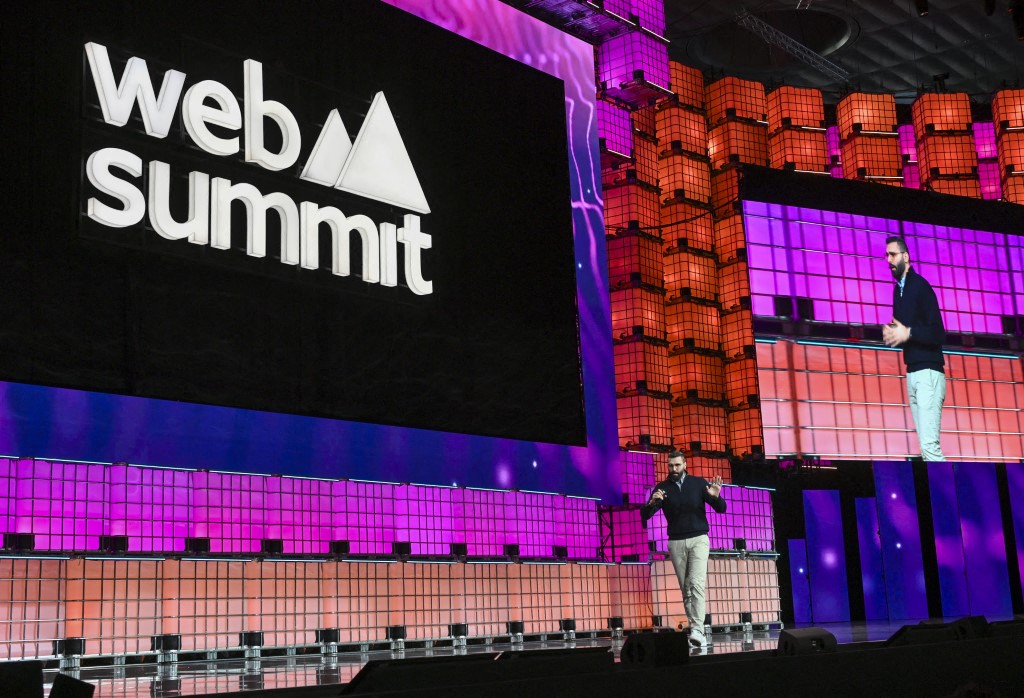UAE's largest podcast network, Amaeya Media launched its second annual State of the Industry report on podcasts in the MENA region. The latest report reveals key insights on changes in regional podcast consumption habits and wider industry trends. Communicate spoke with Chirag Desai, CEO of Amaeya Media gives us some more in-depth information around these insights.
Can you give me an overview of what all happened in 2020 in the podcasting space?
There were three major moments we witnessed in 2020 in the world of podcasting. The first was from a regional industry space, we saw an uptrend in listenership. More than half of the survey respondents stated that they increased their podcast listening habits since March 2020. Nearly 60% were listening to podcasts more than once a week. There was definitely an uptrend as the year moved on, for people to use podcasts, as a way to consume content.
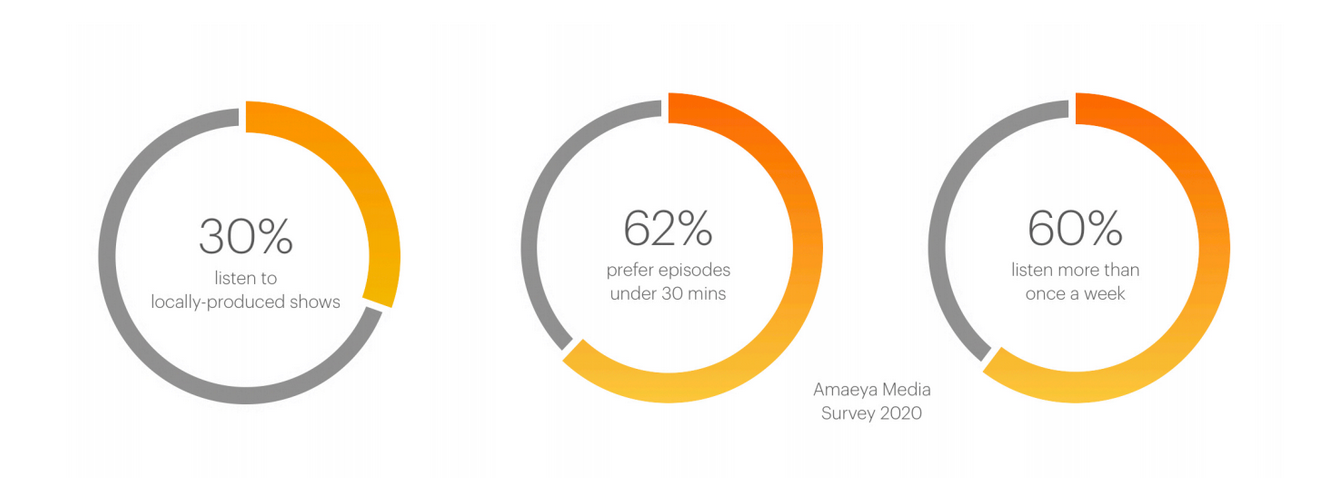
The sub-trend we noticed was a high preference for entertainment content as opposed to pandemic related information. Only two percent said they actually listened to anything pandemic-related.
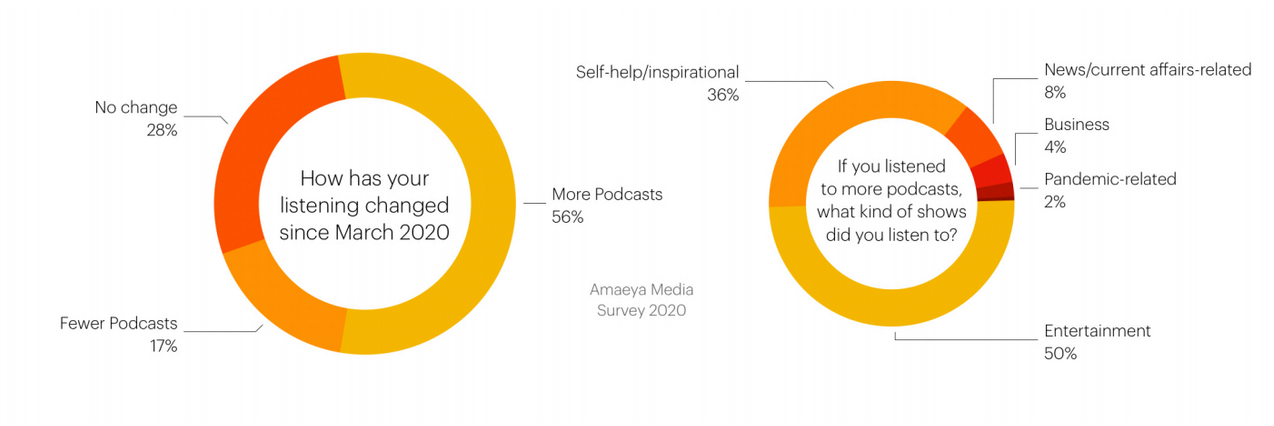
The second trend is from an industry point of view with regards to the challenge of standardisation with a medium like podcasts. We’re starting to see a [major] shift in the industry. Podcasts are generally an open and decentralised medium and now companies such as Spotify, Apple and Amazon Music are vying for market share by keeping content exclusive to their platform. This trend played out in a big way last year, especially with the amount of acquisitions that were done by Spotify. We're starting to see an expansion of the medium but at the same time, we're also witnessing this real tussle of trying to keep the medium decentralised, but also establish certain standards/benchmarks for creators and the industry to follow.
The third trend is how brands are leveraging podcasts. One of the big trends we saw in 2020 was that the total number of podcasts doubled in number. This shows that there is definitely a preference for using podcasts to connect with audiences. Even in terms of timing, podcasts presented itself as a viable medium, that allowed people to record without anyone having to be physically present in the room. We saw brands taking advantage of it as well.
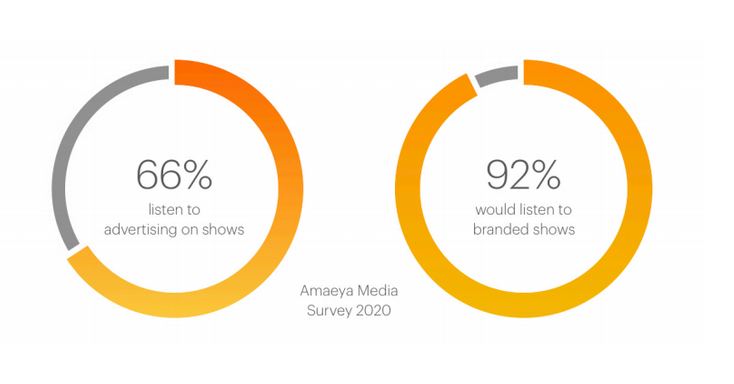
Could you talk more about the issue of standardisation? How should the industry perceive it?
Podcasts by nature are an open and decentralised medium. The decentralised nature allows for a lot of flexibility and it doesn't exist for a medium like video where you're beholden to a platform like Youtube for example. Anybody can make a podcast and publish it anywhere and there's a plethora of apps, where you can listen to podcasts.
The downside of decentralisation is that since it's not standardised, different podcast hosts have different ways of measuring a download. This is an issue that the industry has been working on for a couple of years now and it has reached some level of standardisation. Earlier hosts measured the number of downloads by how many times the file was picked up. Now we have new guidelines that state that episodes have to be listened to, for at least a minute before they can report it as a download- just so they don't fool the system. This is one of the cons of decentralisation and it can act as a deterrent, especially when we're talking to brands and sponsors.
How do we look at data analytically and make decisions? Because there are so many different players, and platforms giving different breakdowns of listening data. You don’t face such an issue in video because everyone mainly goes to one platform and that’s Youtube. This is the other side of standardisation that the podcast industry is trying to figure out.
Ultimately, we don’t want to end up going down the same path as Youtube or Twitter, where there are always issues of creators stating that they’re getting shut out or the algorithm is deprioritising them, etc. We're trying to see if we can maintain that same level of decentralisation but also standardise some of the basics such as – reporting of downloads, improving the search and consumption experience, etc.
What does the insights from the report mean for brands and creators who want to start exploring the medium?
From a point of view of 2020, we didn’t see any major upheaval, particularly because advertising revenue across media was hit hard, especially in the first half of 2020. On the revenue side, a lot of podcasters started looking at ways to diversify their revenue stream. Many podcasters and networks started looking at subscription-based content, especially because brands and advertisers were not in the position to spend like they were earlier.
IAB conducted a study with the big podcast players to understand what is the advertising outlook for them in 2020. The findings reported that what they assumed earlier to be a 30-40% growth is now going to be a 15% growth for the year, because of the limitations in spending. But despite the drop in percentage, it’s still a positive growth net, year on year. I think we’ll start to see podcast advertising take off better in 2021, as spending limitations start to relax. But advertising in podcasts definitely took a straight hit in 2020.
From the brand side, there’s a trend that’s been going on, especially in the MENA region, where brands want to create in the medium rather than advertise on it. What we noticed from our survey is that brands and companies were looking at ways to either start podcasts or be part of podcasts or look at content in podcasts, as a way to expand their reach or grow brand awareness. Amaeya Media launched five new shows in 2020, out of which, three were branded shows.
From a creator standpoint, how has the Spotify acquisition of JRE impacted the podcast content creator economy?
From the point of view of a creator, if Joe Rogan is able to fetch an estimated 100 million for his show, that’s setting some sort of benchmark for creators in the medium. But every deal does not necessarily have to be 100 million. Spotify acquired Gimlet Media in 2019 for an estimated price of 350 million and Gimlet’s known for a wide portfolio of shows. So what Spotify was really buying into was the brand Rogan built for himself on the medium.
If you look at all of Spotify’s acquisitions and deals, they did it with big brand names such as Prince Harry and Princess Meghan, Michele Obama, Kim Kardashian, etc. Apple even brokered a deal with Oprah. So you can see many companies investing money into the medium and getting big names on board to garner listeners. All of this will eventually set the benchmarks for the industry in a couple of years.
The exclusivity is what got creators worried. Essentially what Spotify did was not only make all future Joe Rogan Experience (JRE) content exclusive to Spotify, but also all content he’s made for the show on a platform like Youtube will be removed and shifted to Spotify. That’s what raised a lot of questions, because podcasts are meant to be an open and decentralised medium and as a consumer, he/she should be able to consume from any platform.
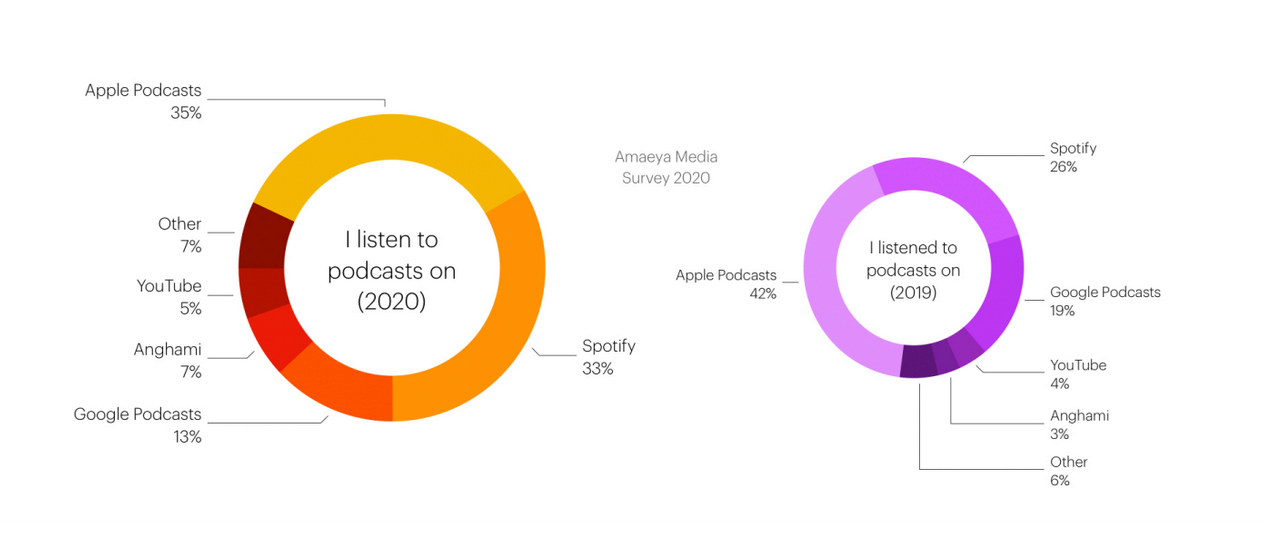
So when companies start to silo the content exclusively for their platforms and centralise consumption, creators begin to worry, if this is going to end up becoming another Youtube. We’re having a lot of conversations in general about new media and censorship and pondering on what kind of impact trends will have. We mentioned in the report how Spotify faced some resistance internally as well with regards to some of the content on JRE.
It’s important for us as an industry to look at the lessons and mistakes that happened on platforms like Youtube, Instagram, etc and make sure that this medium does not go down a similar path.
From a revenue standpoint, a report by Axios cited that while the podcast business is booming, only the top 1% are making all the cash. What are your thoughts on this?
The Axios report discusses about advertising revenue and not revenue in podcasting. Those are necessarily two different things. From an advertising point of view, the numbers are quite normal. Take any other medium such as Instagram for example, the money goes to those who have amassed a large following. Ultimately that becomes the main metric.
On Instagram it might be impressions, likes and following while on podcasts it’s downloads. When you see that number, be wherever it is, the higher ones are going to get more. In the US, podcasts have a CPM based model, so advertisers pay based on every 1000 downloads. This means that the share of revenue from an advertising standpoint will push itself down that way.
What I feel is not covered in that report is the revenue that is being generated for a brand because of podcasting. Brands are also looking at podcasts as a way to supplement value, whether it’s in terms of content strategy, brand awareness or revenue. There is an impact to a business, that is being driven because of podcasts but it’s not quantifiable. So you can’t really put a number on it.
What is the Podcast Index and what were the reasons for setting it up?
To give a little bit of context, Apple has been sort of the de-facto podcast directory since 2005. Apple’s generally had a pretty hands off approach in terms of podcasting until now. They’ve just been running the directory. They also run an open API, through which developers who are interested in creating a podcast player can grab their directory from Apple. It’s free and they don’t charge for it. That’s how the industry has managed to stay decentralised for so long.
But now companies like Spotify are entering the market space and trying to grab most of the market share by keeping content exclusive to their platform, so things are starting to change. Because of this and the whole open-closed debate we discussed earlier, Adam Curry who’s also known as the Podfather decided to step in and do something about it. He’s nicknamed the Podfather because he was one of the first people who initiated the conversation around how can we deliver audio and video in a streaming mechanism on an open standard and that became the RSS standard podcasts sit on today.
Last year, he stepped up to address the entry of more and more players in the podcasting space as a way to ensure that the medium stays decentralised. This means that the industry at large needs to have an open directory that everyone can get access to without anybody putting a pay-wall in front of it. This came to be known as the Podcast index. It’s now running and just about every podcast host can submit podcasts hosted on their platform to the index.
They’ve committed to allowing access of the index to developers for free and in perpetuity. The index is also looking at ways to make the experience better for creators and consumers alike. Some of the issues that’s under discussion right now is how to tag guests in podcast episodes. When the index was launched, Adam Curry called it the start of podcasting 2.0 but the idea is to innovate and find ways to standardise some of the things that should’ve been standardised along time ago while still giving a great experience to both consumers and creators in the medium.


